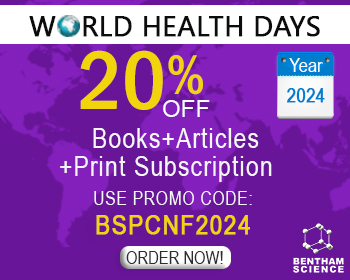Abstract
Background: Radix Stephaniae Tetrandrine (RST), known as FangJi (Pinyin name) in Chinese, is the dried root of Stephania tetrandra S.Moore, and has been prescribed in combination with other herbs to treat cardiovascular diseases and breast cancer in traditional Chinese medicine (TCM) clinical trials.
Objective: The aim of the review is to provide a comprehensive evaluation about the application of RST in breast cancer management in TCM clinical trials, its ingredients, and its action on preventing the development of breast cancer in vitro and in vivo studies.
Methods: Literature sources used were Pubmed, CNKI.net, Cqvip.com, and the Web of Science. For the inquiry, keywords such as Fangji, breast cancer, clinical trials, Radix Stephaniae Tetrandrine, tetrandrine, and fangchinoline were used in various combinations. About 150 research papers and reviews were consulted.
Results: In TCM, RST exhibited the anti-tumor ability through its action on the bladder and lungs through dispersing phlegm and blood stasis. 10 clinical trials were identified which used RST in combination with other herbs to treat breast cancer. On average, the trials were characterized by high efficacy (>85%) and low toxicity. However, most of the clinical trials are characterized as small patient samples, poor design, and different combinations of herbs in prescriptions. To date, more and more compounds have been isolated from this plant. RST exhibited anti-tumor activities by targeting reversing multidrug resistance, inhibiting cell proliferation, inducing apoptosis, preventing tumor angiogenesis, anti-oxidation, anti-inflammation, and enhancing the sensitization and attenuating the toxicity of radiotherapy.
Conclusion: The successful applications of RST in TCM clinical trials and preclinical experiments to beating breast cancer will provide potent lead compounds in the identification of novel anti-cancer drugs, which further contributes to the scientific exploration of functions of RST in TCM.
Keywords: Radix Stephaniae Tetrandrine, breast cancer, pharmacology, phytochemistry, TCM clinical trials, preclinical experiments.
[PMID: 11603280]
[http://dx.doi.org/10.1016/j.canlet.2008.03.059] [PMID: 18495333]
[PMID: 28959829]
[http://dx.doi.org/10.1211/0022357022458] [PMID: 14980008]
[http://dx.doi.org/10.1089/fpd.2011.1119] [PMID: 22845553]
[http://dx.doi.org/10.1016/j.phymed.2003.06.007] [PMID: 15830839]
[http://dx.doi.org/10.1080/14756366.2017.1417276] [PMID: 29281924]
[http://dx.doi.org/10.2174/1871520616666160502122724] [PMID: 27137076]
[http://dx.doi.org/10.1155/2016/3218313] [PMID: 27698674]
[http://dx.doi.org/10.2174/1381612822666161010105242] [PMID: 27748194]
[http://dx.doi.org/10.1016/j.jep.2014.07.058] [PMID: 25109459]
[http://dx.doi.org/10.2174/1381612822666151112145907] [PMID: 26561074]
[http://dx.doi.org/10.3736/jcim20070203] [PMID: 17352863]
[http://dx.doi.org/10.1248/cpb.59.1476] [PMID: 22130369]
[http://dx.doi.org/10.1016/S0024-3205(02)01989-6] [PMID: 12175898]
[http://dx.doi.org/10.1016/S0378-8741(99)00141-5] [PMID: 10687873]
[http://dx.doi.org/10.1016/j.intimp.2011.03.023] [PMID: 21496499]
[http://dx.doi.org/10.1016/j.freeradbiomed.2016.04.201] [PMID: 27154979]
[http://dx.doi.org/10.1134/S0006297918070015] [PMID: 30200862]
[PMID: 18717331]
[PMID: 18479598]
[PMID: 12774357]
[PMID: 12579872]
[http://dx.doi.org/10.3892/ijo.2017.4052] [PMID: 28656245]
[http://dx.doi.org/10.3389/fphar.2017.00351] [PMID: 28642707]
[http://dx.doi.org/10.18632/oncotarget.8315] [PMID: 27027348]
[PMID: 18851784]
[http://dx.doi.org/10.1158/1078-0432.CCR-05-2539] [PMID: 16609061]
[http://dx.doi.org/10.1155/2013/265061] [PMID: 23762115]
[PMID: 12466044]
[http://dx.doi.org/10.1038/sj.bjc.6605847] [PMID: 20717118]
[http://dx.doi.org/10.4161/cbt.10.3.12207] [PMID: 20523116]
[http://dx.doi.org/10.17219/acem/62120] [PMID: 28791816]
[http://dx.doi.org/10.1007/978-3-0348-0837-8_3] [PMID: 24818719]
[http://dx.doi.org/10.1124/mol.60.5.1083] [PMID: 11641437]
[http://dx.doi.org/10.4196/kjpp.2017.21.4.429] [PMID: 28706457]

























